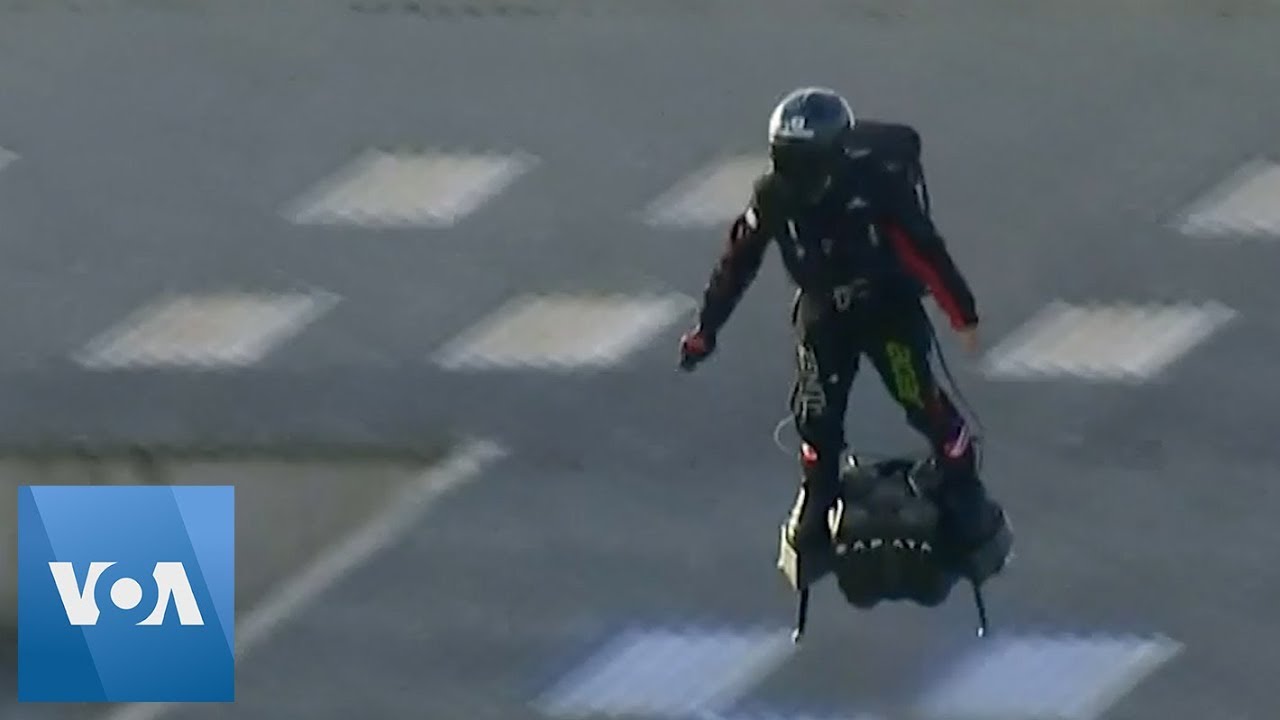French Inventor Flies Across English Channel on Hoverboard

French inventor Franky Zapata successfully flew from France to England on an airborne flyboard, Sunday, August 4.
The 40-year-old completed the 35 kilometer journey in under a half hour. This was Zapata’s second attempt to cross the English Channel, the first attempt was cut short after Zapata collided with the refueling boat minutes into the flight.
Looking like a superhero, Franky Zapata successfully completed the famed 35-kilometer (22-mile) journey in just 22 minutes Sunday morning, reaching speeds of up to 177 kilometers per hour (110 mph) on the flyboard that has made him a French household name.
Propelled by a power pack full of kerosene, Zapata set off from Sangatte in France’s Pas de Calais region and landed in St. Margaret’s Bay, beyond the white cliffs of Dover, in southeast England. He stopped only once, on the British side, to refuel his futuristic invention from a boat in the choppy waters.
What is the company name of the French inventor who created the hoverboard?
French Inventor Flies Across English Channel on Hoverboard
On July 25, 2019, a French inventor, Franky Zapata, made history by crossing the English Channel on a hoverboard. Dubbed as “the flying soldier,” Zapata successfully made the 35-kilometer (22-mile) journey in just 22 minutes, reaching speeds of up to 160 kilometers per hour (99mph).
Zapata’s invention, called the “Flyboard Air,” is a gas-turbine-powered hoverboard that allows the rider to soar through the air. The board is equipped with four turbo engines, which provide a total of 210 horsepower, enabling it to fly at high speeds and reach an altitude of 150 meters (492 feet).
The Flyboard Air has been in development for several years, and this successful flight comes after Zapata had previously made an unsuccessful attempt to cross the Channel on July 14. Due to technical difficulties, he fell into the water and had to be rescued by a boat.
This time, the attempt was made from Sangatte beach near Calais in France and landed in St. Margaret’s Bay in Dover, England. Zapata wore a backpack containing kerosene, which provided fuel for the hoverboard, and he carried a second backpack as a safety precaution.
The flying machine attracted crowds of amazed onlookers in both France and England. Despite the incredible speeds and heights achieved during the flight, Zapata reportedly described the sensation as “like being on a magic carpet.”
Zapata has been working on his hoverboard for several years, and his company, Z-AIR, aims to create a range of flying vehicles. He has expressed his hope that the Flyboard Air could be used by the military or for civilian land surveillance, and he is also exploring the possibility of creating a flying racing league.
This successful flight across the English Channel is not only a remarkable feat of engineering but also a demonstration of human innovation and perseverance. It is a testament to the incredible things that can be achieved with dedication and determination, and it is sure to inspire others to embark on their own ambitious projects.









The Untold Truth Of Todrick Hall
Jeffrey Epstein’s apparent suicide leads to an FBI investigation
It’s So Clear Why People Still Talk About Drake’s Relationships
The Real Reason Theresa Caputo Is Getting A Divorce
Queen of Mean | CARscendants ???? | Descendants 3